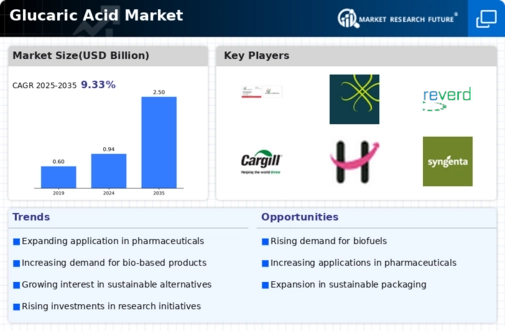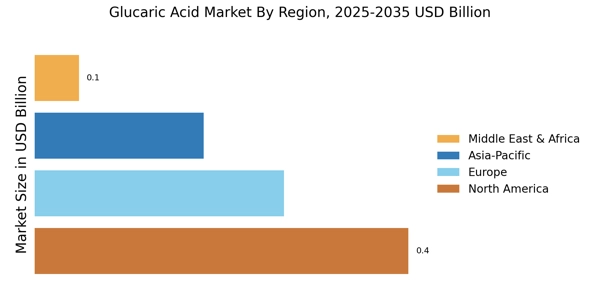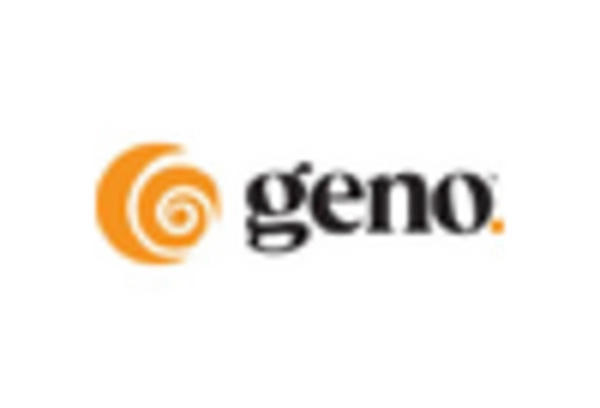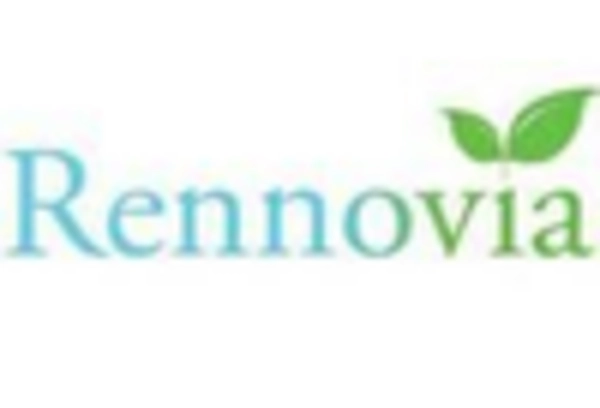Growth in Food and Beverage Sector
The food and beverage sector's growth is another critical driver for the Glucaric Acid Market. Glucaric acid is utilized as a food additive and preservative, enhancing the safety and quality of food products. With the rising global population and changing dietary preferences, the demand for processed and packaged foods is on the rise. Market analysis indicates that the food and beverage industry is expected to grow at a compound annual growth rate of around 5% through 2025. This growth presents opportunities for the Glucaric Acid Market, as manufacturers seek to incorporate glucaric acid to improve food preservation and safety, aligning with consumer expectations for high-quality products.
Expansion in Pharmaceutical Applications
The pharmaceutical sector's expansion is significantly influencing the Glucaric Acid Market. Glucaric acid is recognized for its potential therapeutic applications, including its role as a precursor in the synthesis of various drugs. The market for glucaric acid in pharmaceuticals is expected to grow, driven by the increasing prevalence of chronic diseases and the demand for innovative drug formulations. Recent data suggests that the pharmaceutical industry is projected to reach a valuation of over 1.5 trillion by 2025, which could lead to a corresponding rise in the utilization of glucaric acid. This trend underscores the importance of glucaric acid in developing effective pharmaceutical solutions.
Rising Demand for Biodegradable Products
The increasing consumer preference for biodegradable products is a notable driver in the Glucaric Acid Market. As environmental concerns gain traction, industries are seeking sustainable alternatives to traditional petrochemical-based materials. Glucaric acid, derived from renewable resources, serves as a key ingredient in the production of biodegradable plastics and other eco-friendly products. This shift towards sustainability is reflected in market data, indicating a projected growth rate of approximately 8% annually for biodegradable materials. Consequently, the Glucaric Acid Market is poised to benefit from this trend, as manufacturers incorporate glucaric acid into their formulations to meet consumer demands for environmentally responsible products.
Technological Advancements in Production
Technological advancements in the production of glucaric acid are likely to propel the Glucaric Acid Market forward. Innovations in biotechnological processes have enhanced the efficiency and cost-effectiveness of glucaric acid production. These advancements enable manufacturers to produce glucaric acid from various biomass sources, reducing reliance on fossil fuels. As production methods become more sustainable and economically viable, the market is expected to witness increased adoption of glucaric acid across multiple industries. This trend is indicative of a broader movement towards integrating advanced technologies in chemical manufacturing, which could lead to a more robust and competitive Glucaric Acid Market.
Increased Investment in Research and Development
Increased investment in research and development (R&D) is a pivotal driver for the Glucaric Acid Market. As industries recognize the potential applications of glucaric acid, funding for R&D initiatives is on the rise. This investment aims to explore new uses of glucaric acid in various sectors, including cosmetics, agriculture, and biofuels. The emphasis on innovation is expected to yield novel formulations and applications, thereby expanding the market reach of glucaric acid. Data suggests that R&D spending in the chemical sector is projected to grow by approximately 6% annually, which could significantly impact the Glucaric Acid Market by fostering new product development and enhancing competitive positioning.


















Leave a Comment